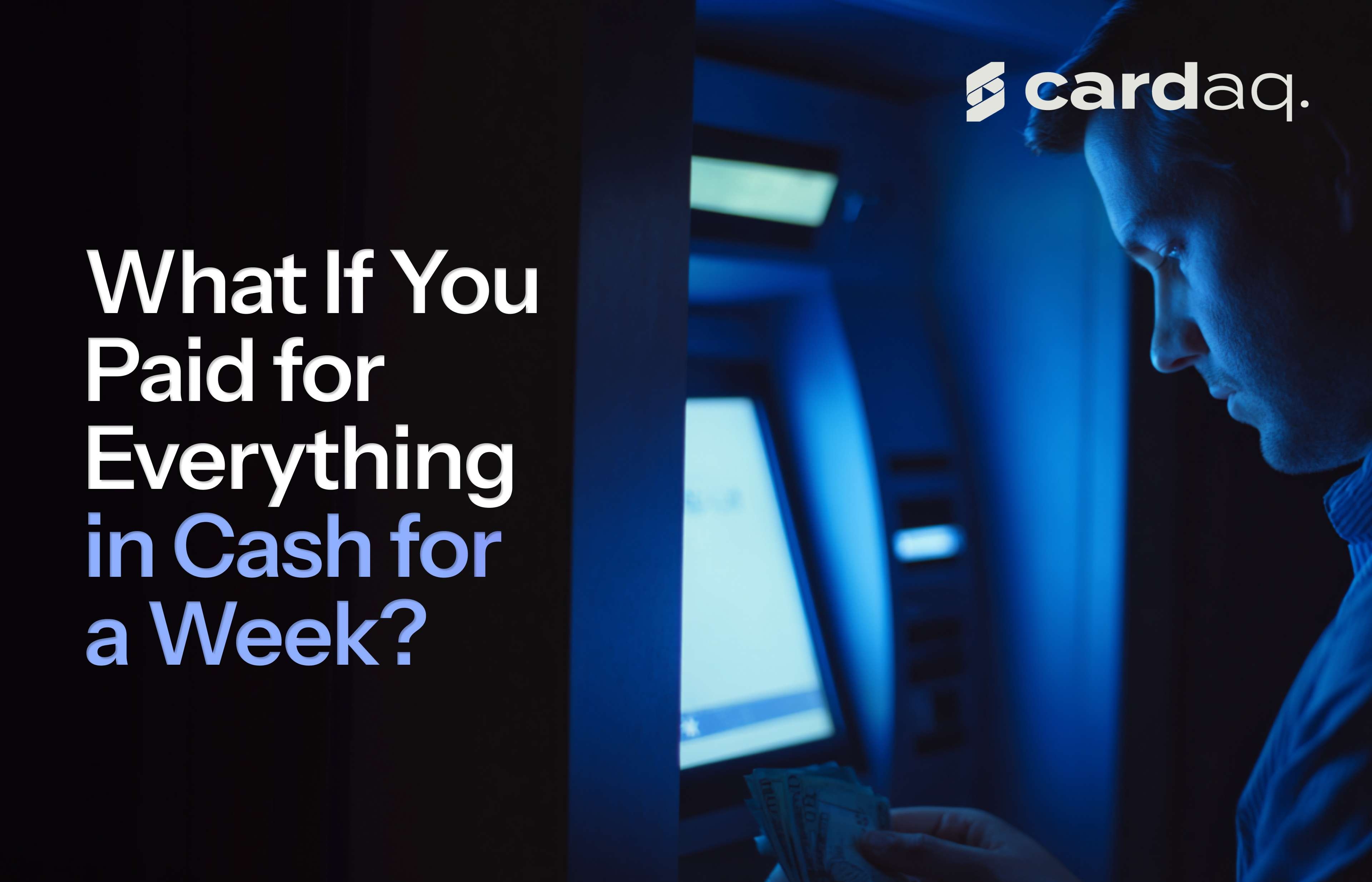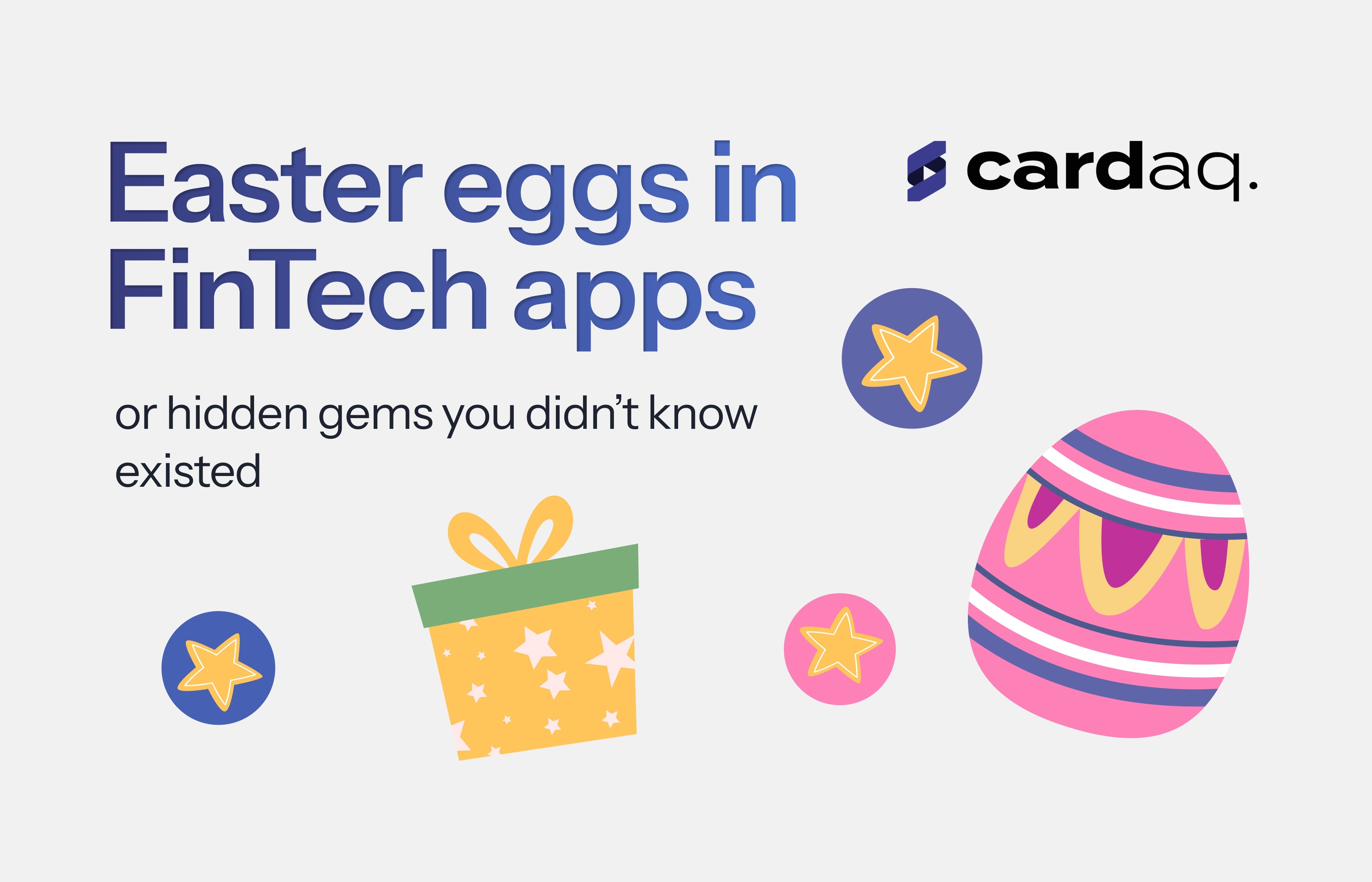
Savings
•Money

Cardaq Team
Apr 17, 2025
Fintech easter eggs are an increasingly common fun, and quirky way, to foster closer engagement between fintechs and their users. These refer to the use of hidden fintech features, or secret fintech tricks, which can include limited edition offers, playful animations and inside jokes all designed to create a more engaging user experience.
We’ve already written about gamification in fintech, and how these fintech solutions are designed to be more novel and playful than traditional offerings, and these easter eggs are the latest part of taking the fintech user experience to the next level.
Fintech easter eggs
These easter eggs, like when used in all other sectors, are to give something extra to the user. This is part of the personalised fintech experience and is a benefit of working with tech, where a few extra lines of code can have a big impact. These can take numerous forms, such as animations, inside jokes, graphics and even refundable tokens and offers.
The first easter egg came decades ago with Adventure, a 1979 game for the Atari 2600 console. At that time game creators were not credited in the games, but Adventure creator Warren Robinett found a workaround – if you reached a certain level in the game, his name appears on the screen (unbeknown to his bosses!). Since then all kinds of apps and tech companies have been experimenting with easter eggs. For instance in 2009 Google released a Chrome experiment called “Google Gravity” that turned the entire Google homepage into a physics simulation. Users could click and drag elements around the page, watch them fall to the bottom of the screen, and even bounce around.
Easter eggs are also popular in video games, with secret tricks, characters and levels available to the most dedicated players. It may be surprising, but these work in a very similar way to how fintech easter eggs work.
What easter eggs can mean to the user
For cynics, easter eggs may not make much sense but interactive fintech elements can have a profound impact. To put it simply they can just be a fun way to interact with users and create a little bit of joy for them!
Easter eggs can be simple when found, or unlocked, but this achievement can unleash some valuable serotonin in a user’s brain. They’ve achieved something others haven’t and therefore been treated to a reward. Here the psychology is as basic and as timeless as it gets, with people often happy to unlock a treat and earn a small reward (even if it is just a small animation or a joke).
This is also a fun way for fintech to further set itself apart. A large part of the fintech proposition has been to break away from the established financial services world and to offer users something new and fresh. This has also become clear in the branding and tone many fintechs put themselves across with.
For example, challenger banks like Monzo and Revolut have brands that are more personable, approachable and less formal. They position themselves as allies in a clear break away from how traditional banks have been positioned. A large part of this includes such fintech brands not taking themselves too seriously, and easter eggs are a result. Such easter eggs position fintechs as more fun and light-hearted. Could you imagine a FTSE 100 listed global bank taking the time to engineer a small, fun easter egg for users? Safe to say, this would be unlikely.
The impact of Easter eggs on FinTech user engagement
A key part about easter eggs as, by their very nature, they require some work to find and unearth. Otherwise they would just be yet another feature of a company’s website!
Instead, fintechs easter eggs have to be hidden and provide tips for finding fintech secrets. In the same way traditional easter egg hunts are fun for children, these secret features must be hidden in novel locations and with a trail of clues to follow. Not only does this add to the achievement sense of finding and unlocking an easter egg, but it helps foster greater long-term engagement with users.
As written about, with gamification of fintech, the use of rewards and badges helps keep users engaged with fintech solutions. Users want to stay committed to a fintech and unlock new levels and achievements, such as a “super saver” badge for making consecutive months of deposits in a savings account or a “long-term trader” badge for someone staying in the market despite recent volatility. Fintechs do this because users’ attention is being continually dragged into countless new directions, and keeping people logged on and loyal to a given app is harder than ever.
This is why easter eggs, though simple concepts, can be very powerful in fostering stronger user engagement between fintechs and their users. As part of an innovative and well-designed user experience journey, easter eggs can be deployed as a finishing touch to reward the user for staying loyal and logged on – granted the right clues are littered throughout to motivate a user to keep searching. When found, these can be a fun and novel way to reward a user (while also keeping them engaged for the benefit of the fintech).
To get more insights from the Cardaq team as they’re published, sign up to a newsletter below: